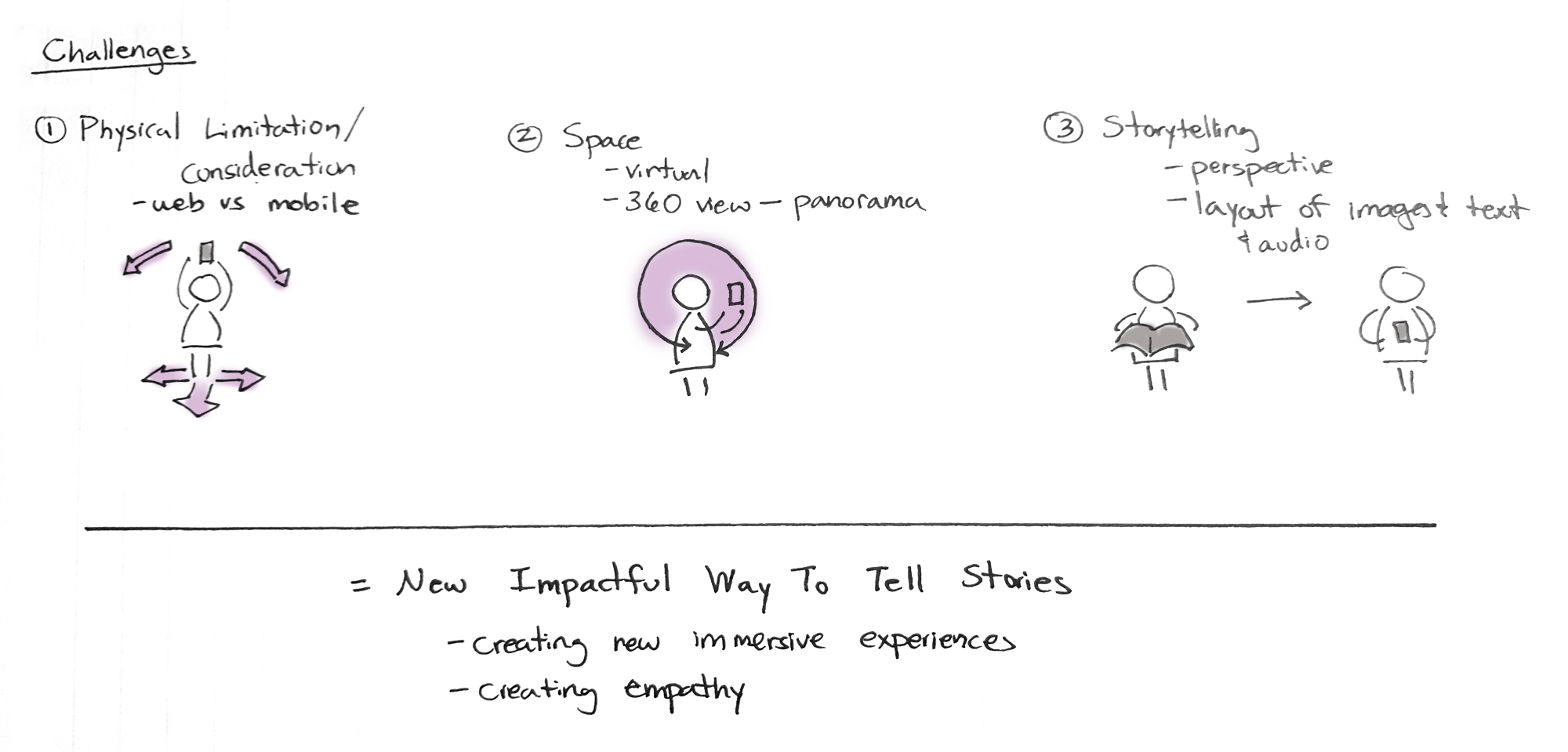Moon Panorama
Background
This project was a individual research project to create narrative prototypes with the help of augmented reality. I was looking into how to blend art with augmented reality and create original emersive artworks to narrate the story.
"he wanted to go up to heaven, and the moon gave him such a friendly look, and when in the end he came to the moon, it was a lump of rotten wood, so he went to the sun, and when he came to the sun, it was a withered sunflower..." Excerpt from "Woyzeck" by Georg Büchner
Discoveries
Personally, I grew a lot while building this project because this was my first time working with my CS knowledge in other ways besides algorithmic homeworks. I worked with a mentor professor, and some phD students who were building the technology to create an augmented reality web browser but did not necessarily have the projects or prototypes to show its potential. Of course, this project is also very new in idea so I approached something where UI isn't very concrete yet and that was very exciting.
Research
I looked at the challenges that narratives might face when combined with augmented reality. The key problem is that augmented reality is new, feels real but also unreal and unconstrained. It can be difficult to understand how to interact in the enviroment.

From there, I was able to also look at some technical challenges. The technical challenges were just as important because that was how I was going to tackle how natural or how amazing this new experience was going to be.

Even the art in the panoramas I created had some design considerations. For example, the advantage of augmented reality is that you can literally make someone feel that they are in someone's choices just by the perspective of the panorama. I think this story worked out particularly nice with the 360 view because of the space theme. The text also had some design consideration in placement. Putting it in between panoramas had the advantage of a more traditional reading formation versus moving the device around constantly. Augmented reality works great with narration because it still shares many elements with traditional storytelling and allows it to be shared physically (espeically versus virual reality).
working with spherical panoramas
The following are some of the final images that I created before mapping them onto spheres. The guideline I used is visible in the earlier processes.









